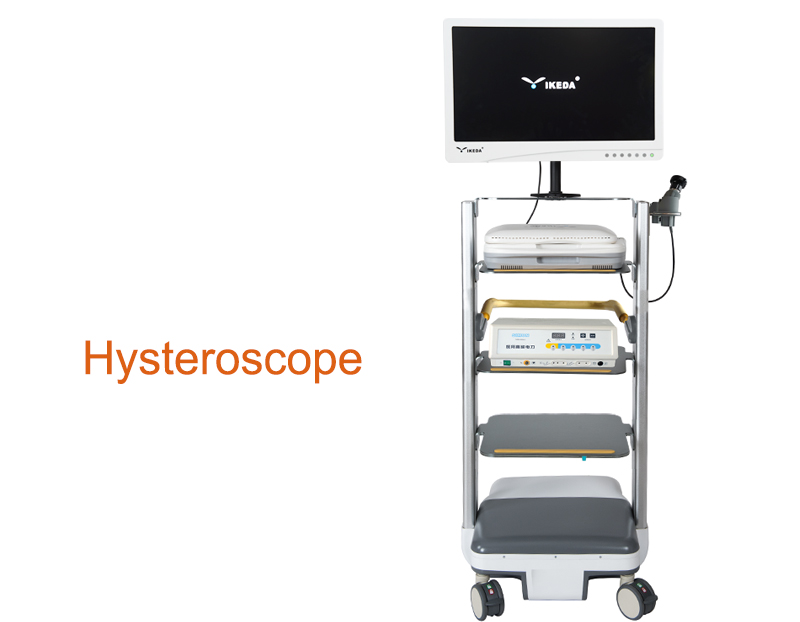Hysteroscope is an advanced device for diagnosis and treatment of diseases in the uterine cavity. It can clearly observe various changes in the uterine cavity and make a clear diagnosis. The scope of application of hysteroscopy system: cervical leiomyoma, endometrial stromal sarcoma, endometrial polyps, endometriosis, dysfunctional uterine bleeding, uterine fibroids, intrauterine adhesions, uterine mediastinum , Family planning, infertility (fallopian tube dredging, intervention), etc.

Operation process of hysteroscopy system:
(1) Connect the hysteroscopy camera system and uterine dilation device to the power source.
(2) Turn on the power of the endoscope camera system and adjust the white balance.
(3) Turn on the power of the uterine dilation device, connect the uterine dilation device and the surgical instrument, and discharge the gas in the connecting pipe.
(4) Turn on the power of the pressure control expansion device, inject 5% glucose solution under the set pressure to expand the uterus. After the liquid flowing out of the drainage hole of the scope is clear, push the scope into the uterus and wait until the uterine cavity is fully expanded. Can be observed.
(5) After the operation is completed, turn off the power of each instrument. Record the amount of dilatation fluid.
Precautions for hysteroscopy system:
1. After using the hysteroscopy surgical instruments, first rinse with clean water, repeatedly rinse the operation channel and the water inlet channel, and use a suction ball to dry the water in the channel to make it dry.
2. After use, wipe the surface of the lens with lens paper dipped in ethanol. Soak disinfection should be used for lens body disinfection. Wipe the lens surface with dry gauze before use.
3. The optical fiber cannot be bent or discounted to avoid breaking the optical fiber bundle.
4. When using a cold light source, you must slowly turn from dark to bright, and slowly turn from bright to dark when it is disabled, and cannot be turned on or off suddenly.
5. The equipment should be placed in a ventilated and dry place to prevent rust.
6. In the process of dilatation, pay attention to the pressure of dilatation not to be too high, and the dilatation fluid should not go empty. Record the amount of dilatation fluid after the operation.